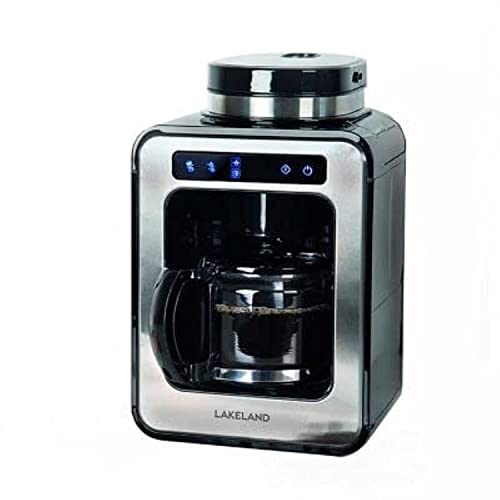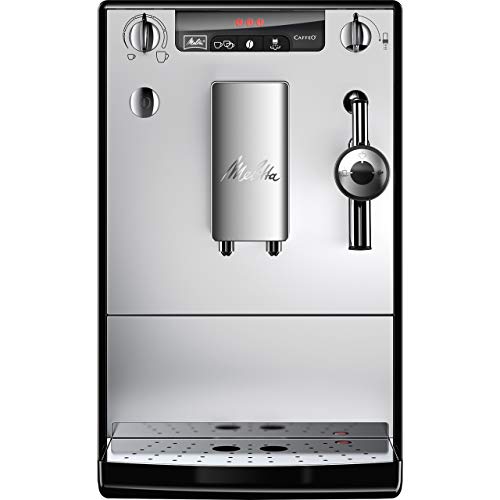How Coffee Bean Coffee Machine Was The Most Talked About Trend Of 2023
페이지 정보
작성자 Brayden 작성일 24-09-19 20:15 조회 14 댓글 0본문
 Bean-to-Cup Coffee Machines
Bean-to-Cup Coffee Machines Bean-to-cup machines are ideal for those mornings where you're tired and want to hit a button. They also offer a certain amount of flexibility for adventurous drinkers.
Bean-to-cup machines are ideal for those mornings where you're tired and want to hit a button. They also offer a certain amount of flexibility for adventurous drinkers.They are able to store whole beans in a hopper, then grinding them prior to brewing and pouring a beverage at the touch of the button. They can serve staff and customers, without the requirement for baristas.
Cost-effectiveness
Each coffee pod has pros and cons, regardless of whether you prefer the traditional taste or convenience of pre-packaged pods. Cost-effectiveness is the important factor to consider. Bean-to-cup machines offer an economical alternative for long-term use than pod-based models. They can help you cut down on recurring expenses by using bulk-bought premium beans that can be purchased at a cheaper price than coffee pods. They can also help reduce waste by removing the coffee pods.
Bean-to-cup coffee makers are a great option for offices because they're very easy to use. Bean-to-cup coffee makers are a ideal alternative to manual drip coffeemakers that require you to grind and prepare beans manually. They produce a consistent, smooth beverage at the touch of the button. They are also designed to be low-maintenance, and easy to clean. Many come with built-in rinse programs and cleaning programs, making it easy to keep them running smoothly.
The most important benefit of a bean-to-cup machine is its user-friendliness. It is typically easy to set up and use, and requires no previous training to operate. It comes with a built-in milk frother as well as a grinder. This makes it ideal for small businesses with a small staff. It also delivers excellent espresso at the push of the button. This is particularly useful for busy offices.
It might be more expensive to purchase a bean-to-cup machine than a pod-based one however, it will save you money in the long run by reducing the use of energy and supplies. Furthermore, it is more environmentally greener than pod-based machines as it generates less waste and consumes less natural resources.
Coffee can be a fantastic way to boost productivity and morale. By putting a bean to cup machine in your breakroom, you can create a space that encourages collaboration and teamwork. It can also encourage social interaction between your employees through encouraging informal discussions. In these conversations employees can share ideas and come up with innovative solutions to problems. A quick cup of coffee can give your brain a boost and stimulate creativity.
Convenience
bean to cup equipment (Click Link)-to cup coffee machines are an affordable way to serve high-quality coffee at the click of an button. They are simple to use and require minimal maintenance. They are equipped with grinders which ensure your beans are freshly ground for every cup. They can be programmed to make various drinks at the touch of a button, including cold and hot drinks. You can create a wide range of drinks to serve your patrons and staff.
Additionally, a bean-to-cup coffee maker will let you save money by removing the need for paper filters as well as plastic cups. It will also reduce the amount of coffee grounds end in the trash. If you're environmentally conscious, you can choose a coffee machine that uses organic whole beans to provide the most sustainable experience.
Contrary to pod coffee machines that require a certain level of expertise to operate, a bean to cup machine can be operated by anyone with a minimum or no experience. The user just needs to fill the bean hopper with water and the water tank before choosing the drink they want from the machine's user-friendly control panel. Some coffee bean machines permit you to alter the strength and temperature.
The pod coffee machines utilize pre-ground coffee powder the bean-to-cup coffee machine grinds whole beans before brewing every cup of coffee. This keeps the aroma and flavor of the beans and results in a more authentic flavour and texture. They are also able to tailor each cup of coffee to its user, learning their preferences throughout the day. The Barista TS Smart is an example of such machine that can be programmed to make 21 kinds of coffee, ranging from espresso to long black.
A bean-to-cup coffee machine will also run a rinse cycle before it shuts off and when first turned on. This will prevent residues from building up on the coffee spouts and milk dispensers. It will also have an internal bin for used coffee grounds and milk. The bin doesn't have to be empty every day and usually has a visual reminder that it is full.
Freshness
Freshly brewed coffee to cup machine is packed with health benefits. It can increase metabolism, lower the risk of heart disease, and give you an unnatural energy boost. However, it is important to select the best beans for your machine. Select whole bean coffees that have a clearly marked roast dates to ensure the best quality and taste for your cup. This is crucial for bean-to-cup machines that require freshly roasted, ground coffee beans. Coffee beans that have been roasted for a long time will be bitter taste and a poor flavor.
The shelf life of coffee beans is contingent on several factors including storage conditions and temperature. Unopened bags of whole beans can be kept for up to six months following roasting, if properly stored. But once the beans are grinded, their shelf life decreases dramatically due to the increased surface area which exposes them to oxygen. In general, it is recommended to use freshly ground beans within two weeks after opening or grinding.
The appearance of the coffee beans is another way to determine whether or not your coffee is fresh. Fresh whole beans will be shiny, whereas older coffee beans are dull and dried. The aroma of the beans may aid in determining whether they are fresh or not.
When coffee beans are roast, they release volatile aromatic oils that carry the flavor of the beans. These oils are the reason for the distinctive aroma of each coffee, and when they lose their potency, the flavor of the coffee brewed will be affected. To avoid this, make sure you purchase coffee beans that have a clear roasting date. Also, keep them in a sealed airtight container.
It is also recommended to grind the coffee a few days prior to when you intend to make it. This will help reduce the risk of oxidation and ensure you get the most flavor. For optimal results, don't store coffee beans that have been roasted in the freezer, which can cause structural damage and moisture accumulation.
The the hopper is an essential part of any bean-to-cup machine, and it must be regularly cleaned to remove excess water and dirt. Cleaning the hopper can keep it clear of blockages and improve the overall performance of the machine. It is possible to do this by removing the machine's hopper daily by washing it in hot water and wiping down the hopper with a soft cloth to remove any buildup or dust.
Sustainability
The most sustainable option is to purchase beans that have been grown and processed sustainably, no matter if you're using an instant cup filter, capsule, or. By choosing sustainable brands or buying beans that are UTZ or fair trade certified, you can reduce the amount of waste generated during the roasting and packaging processes. These certifications ensure that the farmers who cultivate the beans receive adequate wages and good working conditions.
Coffee beans are the largest contributor to greenhouse gas emission. It can be anywhere between 40 and 80%. This is due to the fact that large corporations make use of intensive fertilizers, irrigation, and pesticides to improve the efficiency of their crops. This leads to deforestation and contamination of water sources. It also kills many species. It also increases soil erosion, which ruins the quality of the land and can cause climate change.
If you select a bean-to cup machine, you can reduce the carbon footprint of your coffee by removing the necessity for paper cups and plastic pods. You can go even further and share the machine with a person to reduce energy consumption. Another option to reduce your coffee's environmental impact is to buy a sustainable refillable pod that what is a bean to cup coffee machine able to be used several times.
The increasing emphasis on sustainability has made espresso machines more efficient, with many making use of less electricity than they did in the past. Some are made from recycled materials, and some are 100% compostable. They will become biomaterials within 84 days of being disposed. You can also help avoid adding to the waste problem by encouraging your colleagues to use reusable mugs and tumblers, as well as by offering coffee grounds to compost. Donating to charities that support responsible coffee production is another way to help. Lastly, you can also reduce your carbon footprint by avoiding the use of single-use items such as stirrers and sugar.
댓글목록 0
등록된 댓글이 없습니다.
